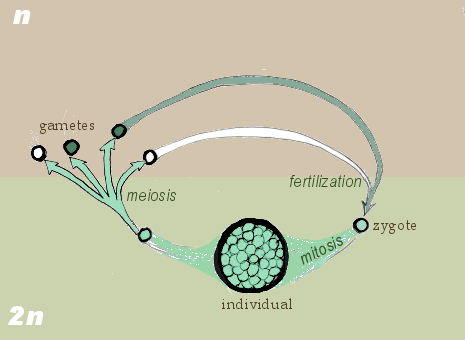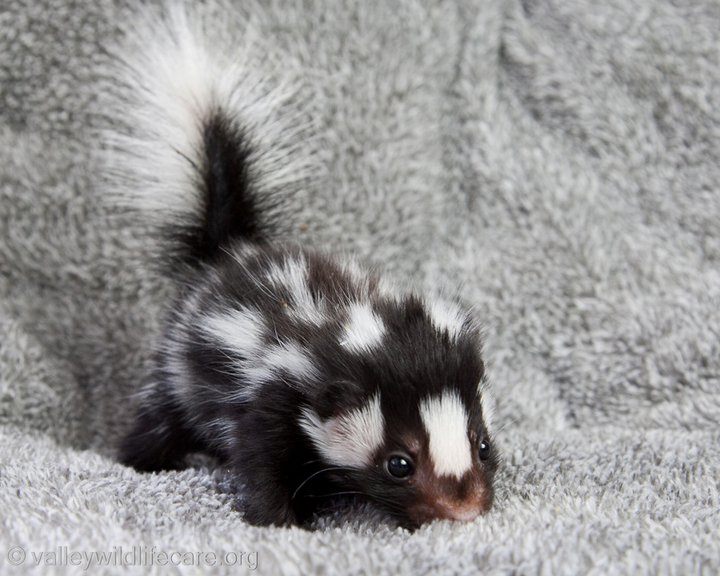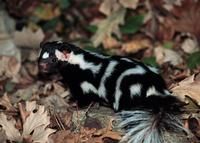Reproduction and Life History
The main forms of reproduction of every organism are
that of sexual or asexual reproduction. Spilogale
putorius, also known more commonly as the spotted
skunk, reproduces entirely by modes of sexual
reproduction. There are male and female organisms in the
population, both are required, they must come together,
and from fertilization, can produce offspring. In the
gametic life cycle, meiosis is always present and the
formation of gametes takes place. From there, those
gametes fuse together to create a diploid zygote, which
then grows on its own through mitosis and the creation
of two identical daughter cells, thus maturing the
organism. This is the life cycle of the Spilogale
putorius.

Seasons can have a very large effect on the reproducibility of the organism, this seasonal pattern was observed very clearly in the spotted skunks (Greensid and Mead 1973). The spotted skunk was found to ovulate spontaneously. There are cycles in the seasons that favor ovulation and include a time when most skunks are in heat, but the release of eggs from the ovaries is spontaneous during this time frame.
Most cycles for
females begin in early September and can continue on
through the middle of January (Greensid
and Mead 1973). The cycle time and the duration
between cycles was found to be variable as well. The
majority of the mating occurs during the month of
October. Males of this species tend to limit the
reproduction mechanisms as it was found that males were
almost completely void of any sperm during the months of
February through August, drastically decreasing any
chance that an abnormal female still in an ovulation
cycle would be fertilized. This, however, is a very rare
case and would include a female having a second litter (Greensid
and Mead 1973, Bradley 1997).

Delayed implantation is seen in most spotted skunks, in which a fertilized egg does not imbed into the uterus wall for a period of time, making this a notable characteristic of the Spilogale putorius reproduction cycle (Bradley 1997).
Litter sizes can range from 2- 9 offspring; however,
one study found that the average number of offspring was
a little over 3, with a ratio of approximately 2 males
to every 1 female offspring (Foresman
and Mead 1973). Sexual reproduction gives the great
advantage of the possibility of gene recombination. The
very noticeable black and white markings of the spunk is
visible upon birth, though the kit is blind and must
rely heavily on its mother to care for it. Offspring
reach adult maturity between the ages of 9 months to a
year, and then can begin to mate and reproduce on their
own (Greensid
and Mead 1973). The size of the litter, being that
it is usually more then one, is very helpful in the
survival of the species. 
These high reproductive rates help counteract the sometimes low rate of survival among the Spilogale putorius (Lesmeister et al. 2010). Skunks reproduce very similarly to animals that one may come into contact frequently, making the life history just a little easier to grasp.
Continue reading and head to the Interactions and Nutrition page!
May also be helpful: